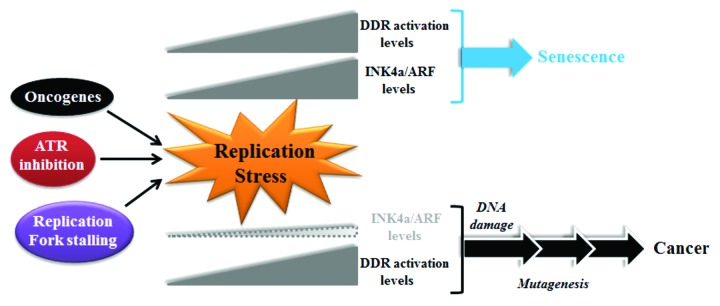
Figure 1. A schematic summarizing the contrasting outcomes of elevated replicative stress in the presence or absence of INK4a/ARF, as proposed by Monasor and colleagues. Prolonged replicative stress, which can occur under various non-mutually exclusive circumstances, results in elevated DDR activation. In the presence of functional INK4a/ARF, its expression is also increased, and this usually drives the cells toward senescence. In the absence of functional INK4a/ARF, cells can replicate even in the context of an elevated DDR, thereby creating the environment for mutation fixation, establishing the pathway to cellular transformation.
